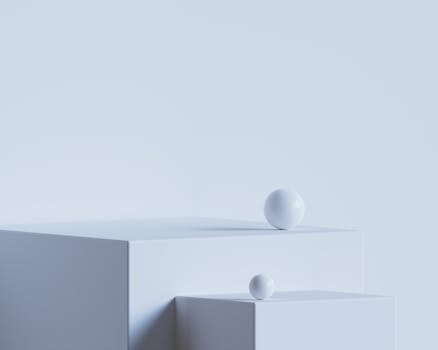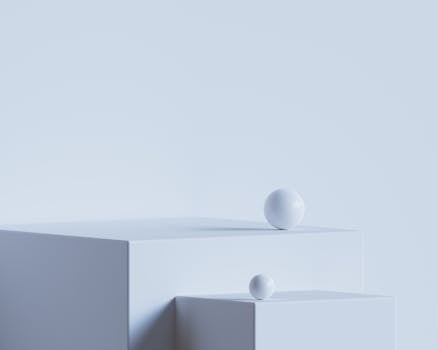Choosing The Right 3D Modeling Software For Beginners
When embarking on the journey of 3D printing, one of the most critical first steps is selecting the appropriate 3D modeling software. For beginners, this decision can significantly influence the learning curve, the quality of the final model, and the overall experience of designing for 3D printing. With a wide array of software options available, each offering different features, interfaces, and levels of complexity, it is essential to choose a platform that aligns with your skill level, goals, and the type of projects you intend to create.
To begin with, it is important to understand the distinction between different types of 3D modeling software. Broadly speaking, these programs fall into two categories: solid modeling and surface modeling. Solid modeling software, such as Tinkercad or Fusion 360, is generally more suitable for 3D printing because it creates models that are watertight and physically accurate. Surface modeling tools, on the other hand, are often used in animation and visual effects, and may not always produce models that are ready for physical fabrication. Therefore, for those new to 3D printing, solid modeling software is typically the more practical choice.
Among the most accessible options for beginners is Tinkercad, a browser-based application developed by Autodesk. Tinkercad is particularly well-suited for those with no prior experience in 3D design, offering an intuitive drag-and-drop interface and a library of basic shapes that can be combined to form more complex structures. Its simplicity does not come at the expense of functionality, as it also includes features such as grouping, alignment, and hole creation, which are essential for creating printable models. Moreover, Tinkercad allows for easy export of files in STL format, which is the standard for most 3D printers.
As users become more comfortable with the fundamentals of 3D modeling, they may wish to transition to more advanced software such as Fusion 360. Also developed by Autodesk, Fusion 360 offers a more comprehensive set of tools, including parametric modeling, simulation, and assembly features. While it has a steeper learning curve than Tinkercad, it provides greater control and precision, making it ideal for engineering applications and more intricate designs. Importantly, Fusion 360 offers a free license for hobbyists and students, making it an accessible next step for those looking to deepen their skills.
Another noteworthy option is SketchUp, which is known for its user-friendly interface and strong community support. While originally designed for architectural modeling, SketchUp can be adapted for 3D printing with the help of plugins that ensure models are manifold and printable. Blender, though primarily used for animation and rendering, is another powerful tool that can be used for 3D printing with the right knowledge and settings. However, due to its complexity, it is generally recommended for users who already have some experience with 3D modeling.
In conclusion, choosing the right 3D modeling software is a foundational step in designing your first 3D model for printing. By starting with beginner-friendly tools like Tinkercad and gradually progressing to more advanced platforms such as Fusion 360 or SketchUp, users can build their skills incrementally while ensuring that their models are suitable for successful 3D printing.
Step-By-Step Guide To Designing Your First Printable 3D Model

Designing your first 3D model for printing can be an exciting yet challenging endeavor. With the right approach and tools, however, even beginners can create functional and aesthetically pleasing models. The process begins with a clear understanding of what you want to design. Whether it’s a simple keychain, a phone stand, or a custom figurine, having a specific goal in mind will help guide your design decisions and streamline the modeling process.
Once you have a concept, the next step is to choose appropriate 3D modeling software. There are several beginner-friendly options available, such as Tinkercad, Fusion 360, and SketchUp. Tinkercad, in particular, is ideal for novices due to its intuitive interface and web-based platform. After selecting your software, take some time to familiarize yourself with its basic tools and functions. Understanding how to manipulate shapes, scale objects, and use alignment tools will be essential as you begin to build your model.
With the software ready, start by creating a rough sketch or outline of your design. This can be done either on paper or directly within the modeling program. Begin constructing your model using basic geometric shapes, gradually refining the form by combining, subtracting, or modifying these elements. It’s important to keep in mind the limitations of 3D printing during this stage. For instance, overhangs greater than 45 degrees may require support structures, and extremely thin walls may not print correctly. Designing with these constraints in mind will help ensure that your model is both printable and durable.
As you refine your model, pay close attention to dimensions and tolerances. Accurate measurements are crucial, especially if your model includes moving parts or needs to fit with other components. Most 3D modeling software allows you to input exact dimensions, which can help maintain precision throughout the design process. Additionally, consider the type of material you plan to use for printing, as different filaments have varying levels of flexibility, strength, and shrinkage. These factors can influence how your final print turns out and should be accounted for in your design.
After completing the model, the next step is to export it in a format compatible with 3D printers, typically STL or OBJ files. Once exported, import the file into slicing software such as Cura or PrusaSlicer. This software translates your 3D model into instructions that the printer can understand, allowing you to adjust settings like layer height, infill density, and print speed. It’s advisable to preview the sliced model to check for any potential issues before proceeding to print.
Finally, conduct a test print of your model. This initial print will help you identify any design flaws or printing errors that need to be addressed. If necessary, return to your modeling software to make adjustments, then repeat the slicing and printing process. Through this iterative approach, you’ll gradually improve both your design and printing skills. With patience and practice, designing your first 3D model for printing can be a rewarding experience that opens the door to countless creative possibilities.
Common Mistakes To Avoid When Creating Your First 3D Print Design
Designing your first 3D model for printing can be an exciting yet challenging endeavor. As you begin to explore the world of 3D modeling, it is essential to be aware of common pitfalls that can hinder the success of your print. Understanding these mistakes early on can save time, materials, and frustration, ultimately leading to a more rewarding experience.
One of the most frequent errors made by beginners is neglecting to consider the limitations of the 3D printer itself. Each printer has specific capabilities, such as maximum build volume, layer resolution, and material compatibility. Designing a model that exceeds these parameters can result in failed prints or require significant modifications. Therefore, it is crucial to familiarize yourself with the specifications of your printer before starting the design process. This foundational knowledge will help ensure that your model is both printable and practical.
Another common mistake is creating models with non-manifold geometry. In simple terms, a non-manifold model contains elements that cannot exist in the real world, such as edges shared by more than two faces or internal faces that confuse the slicing software. These issues often arise from improper modeling techniques or software glitches and can prevent the model from being sliced correctly. To avoid this, regularly check your model for errors using built-in analysis tools available in most 3D modeling software. Ensuring that your design is watertight and free of non-manifold edges is a critical step toward a successful print.
In addition to geometry issues, beginners often overlook the importance of wall thickness. Designing walls that are too thin can lead to fragile prints that break easily, while excessively thick walls may waste material and increase print time unnecessarily. It is advisable to consult the recommended minimum wall thickness for your chosen material and printer. Striking a balance between strength and efficiency will result in a more durable and cost-effective model.
Furthermore, failing to account for overhangs and support structures is another frequent oversight. Overhangs are parts of the model that extend outward without any support beneath them, which can cause sagging or deformation during printing. While some printers handle minor overhangs well, more extreme angles typically require support structures. Designing with print orientation in mind and minimizing the need for supports can improve print quality and reduce post-processing time. If supports are necessary, ensure they are easy to remove and do not damage the final piece.
Another area where beginners often struggle is with scale and tolerances. It is easy to design a model that looks perfect on screen but is either too large or too small when printed. Always double-check the units of measurement in your modeling software and compare them with your printer’s settings. Additionally, if your design includes moving parts or components that must fit together, incorporating appropriate tolerances is essential. Without sufficient clearance, parts may fuse together or fail to assemble properly.
Lastly, skipping test prints can be a costly mistake. Even with careful planning, unforeseen issues may arise during the printing process. Creating a small-scale prototype or printing a section of the model can help identify problems early and allow for adjustments before committing to a full-scale print. By taking the time to test and refine your design, you increase the likelihood of a successful and satisfying final product.



